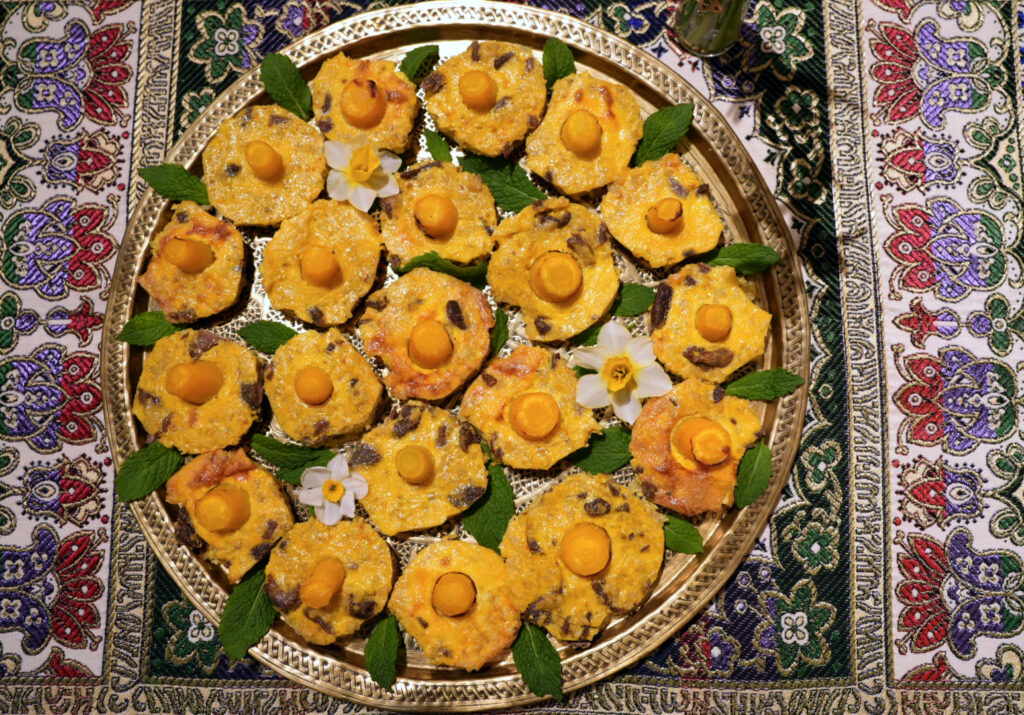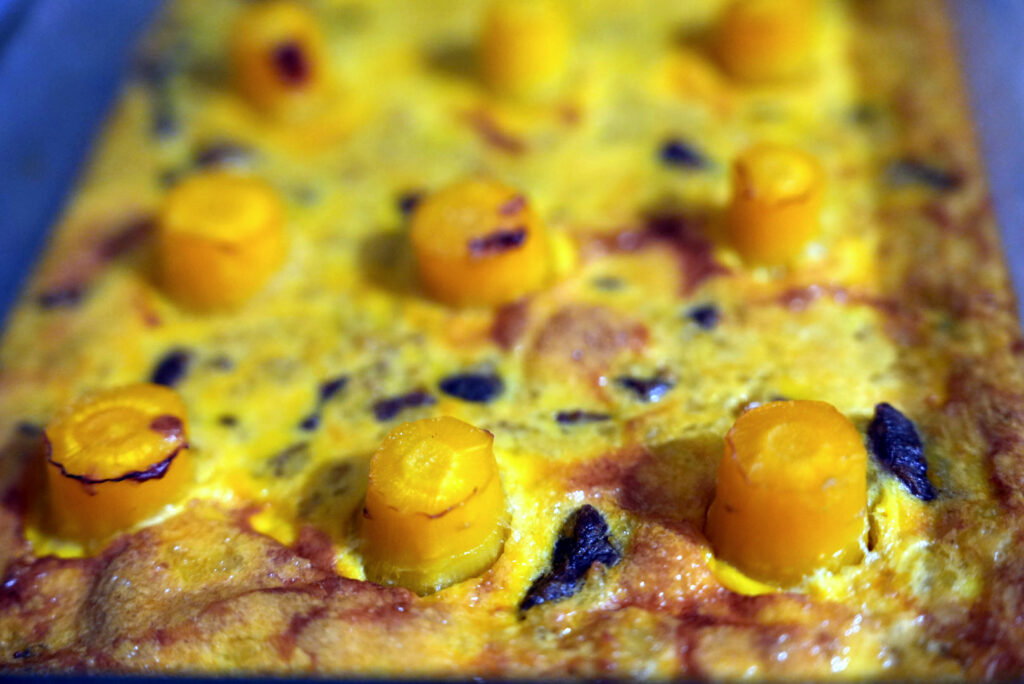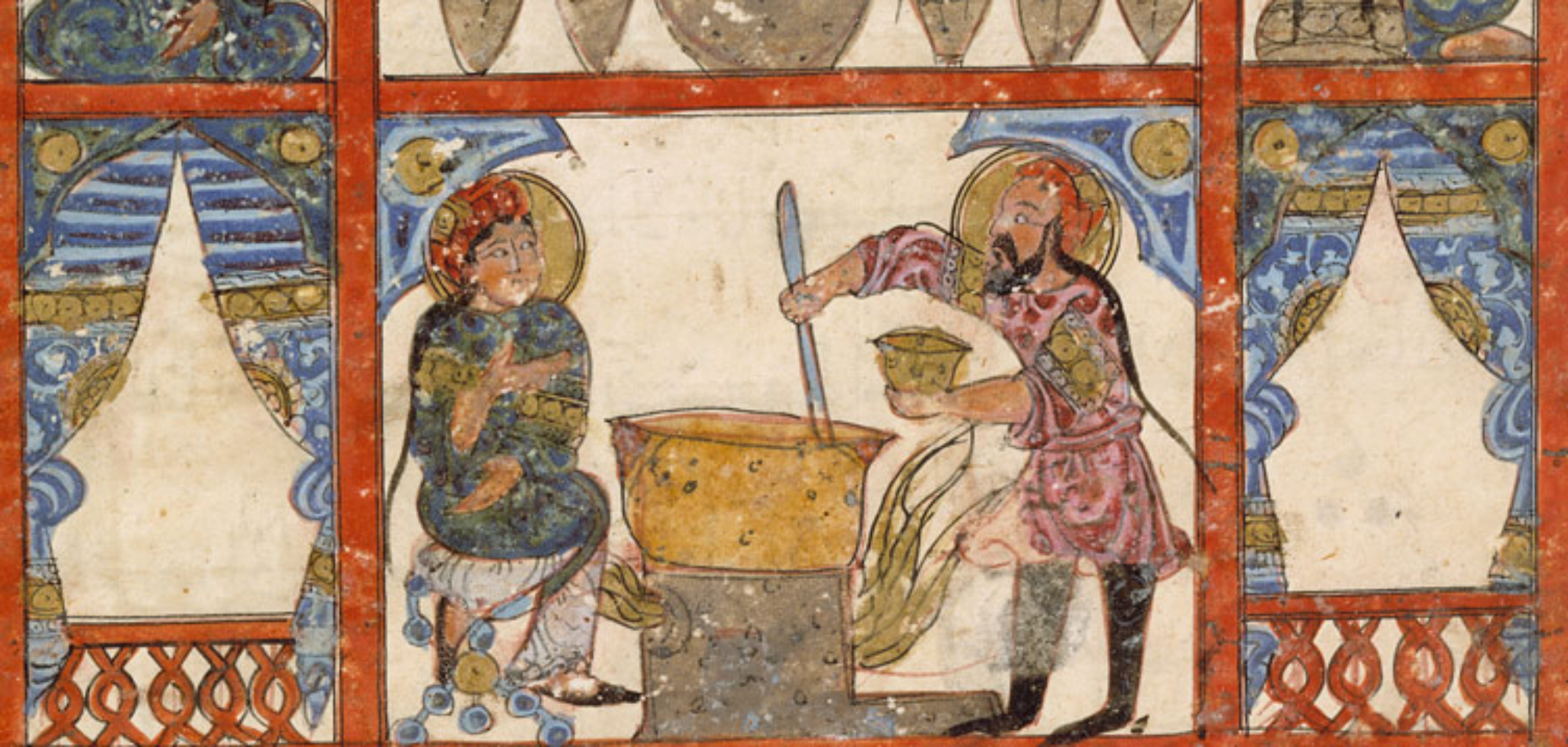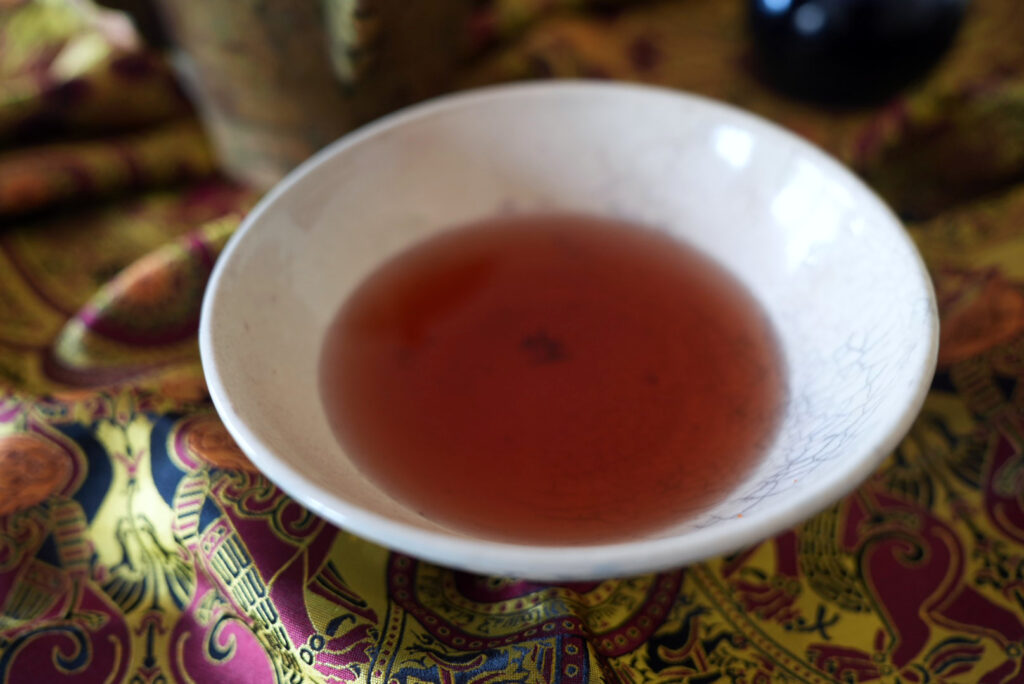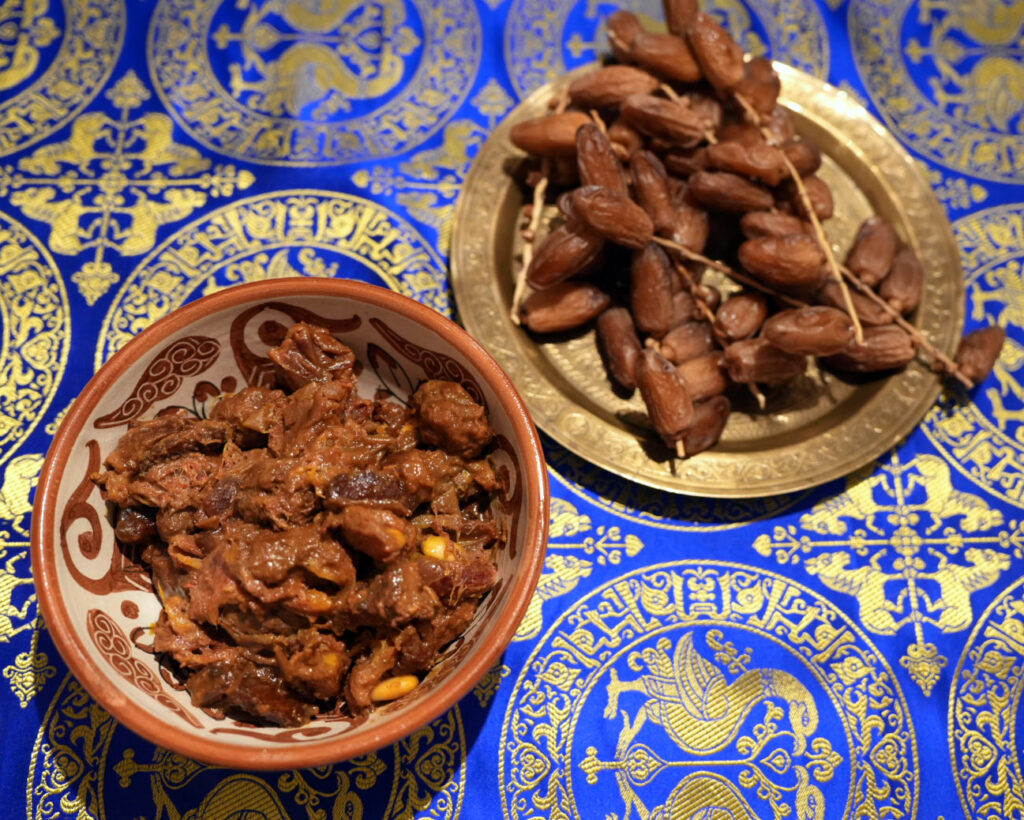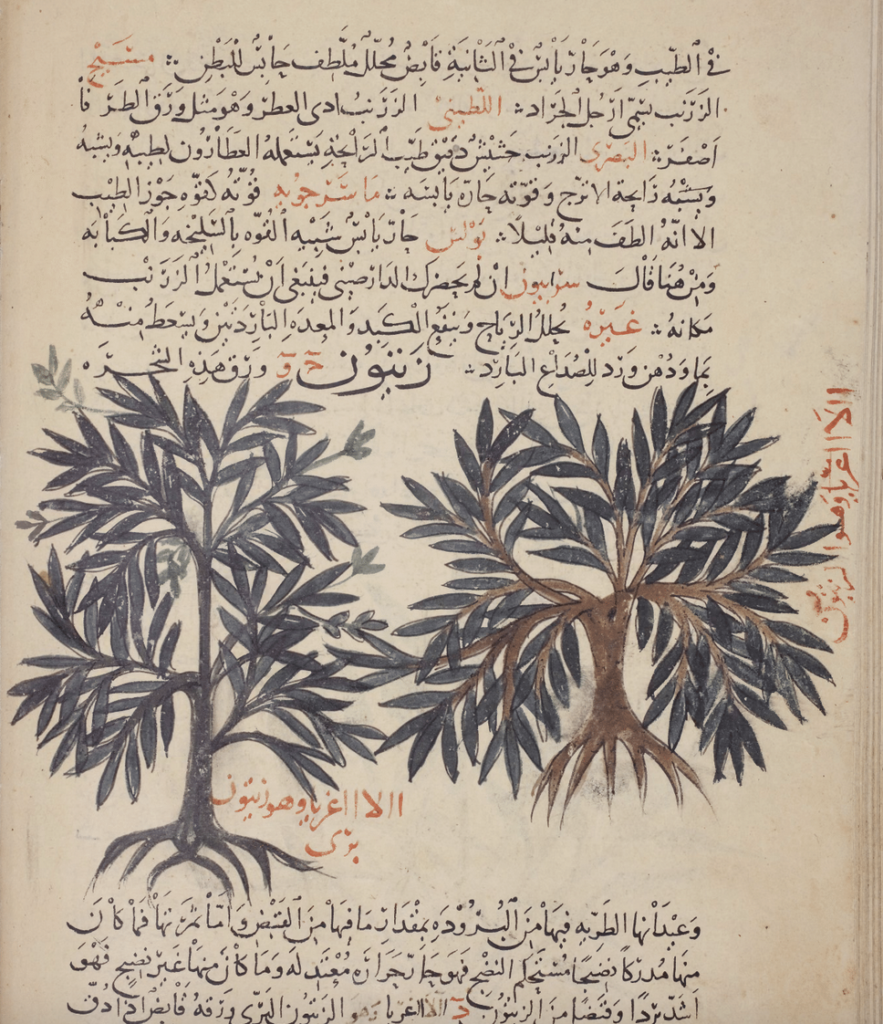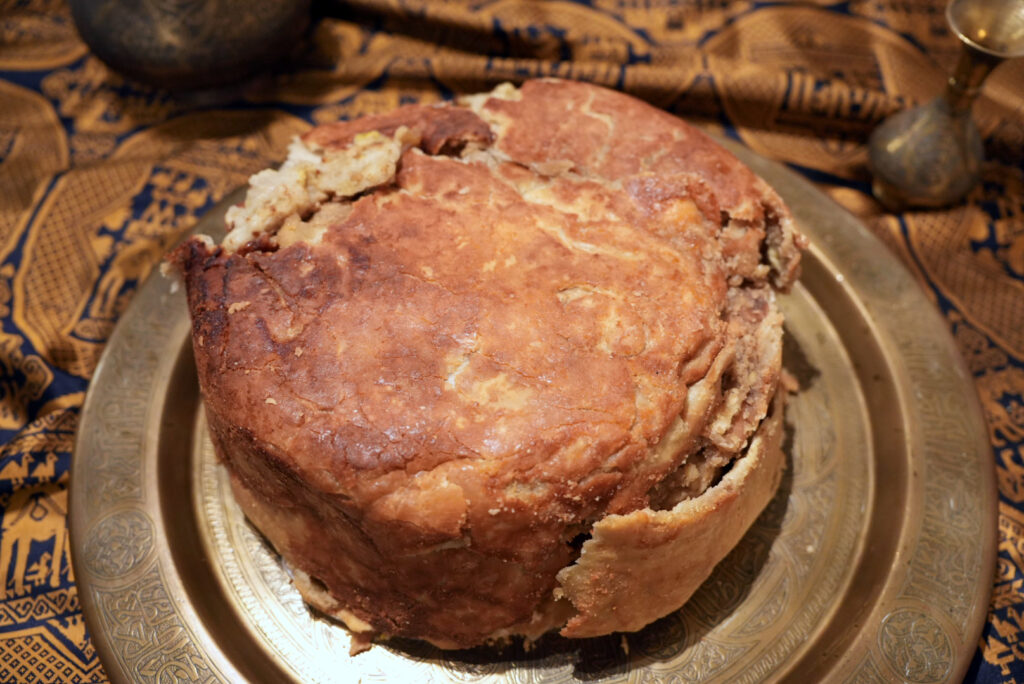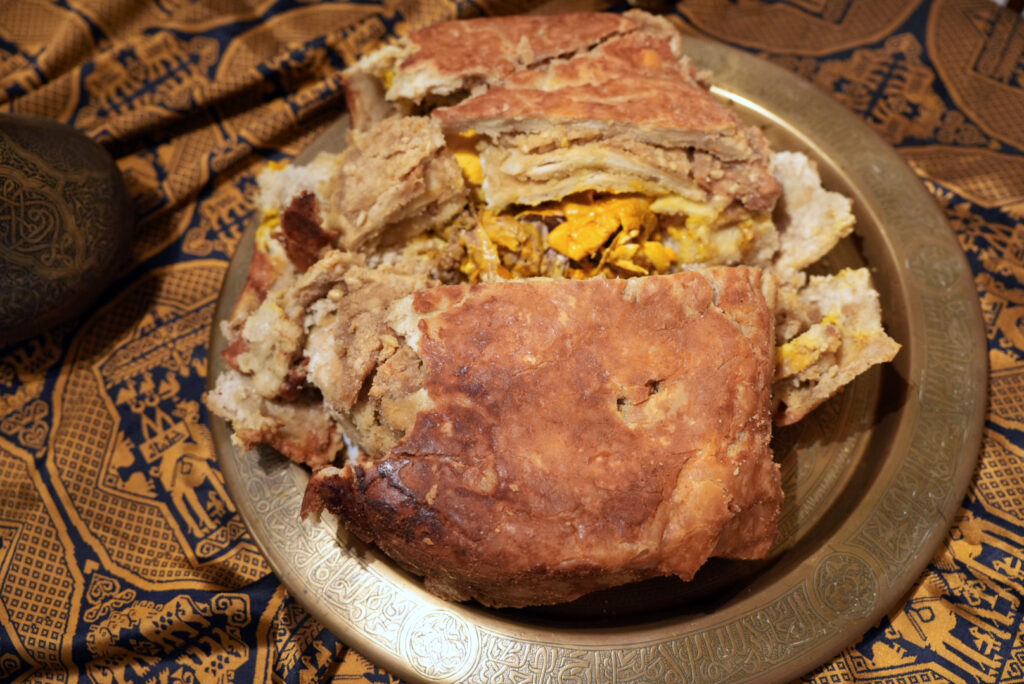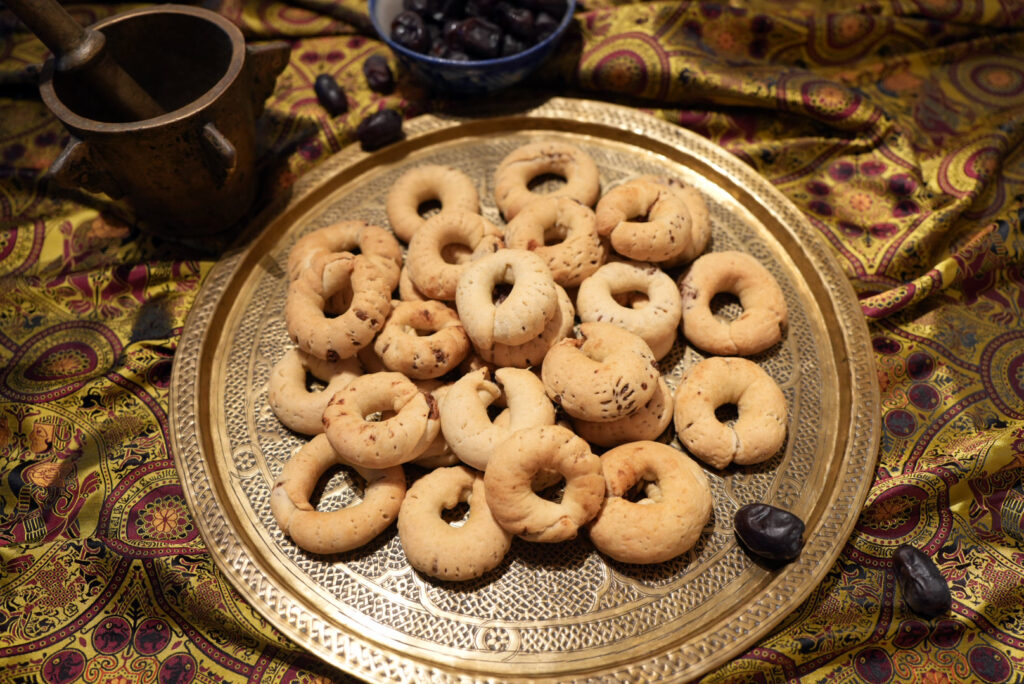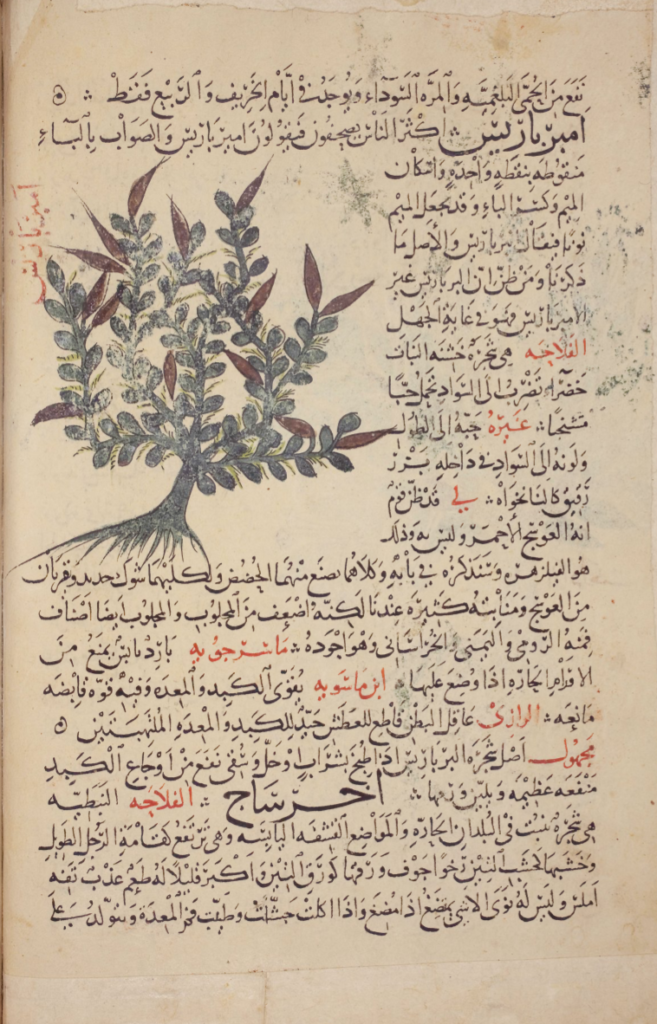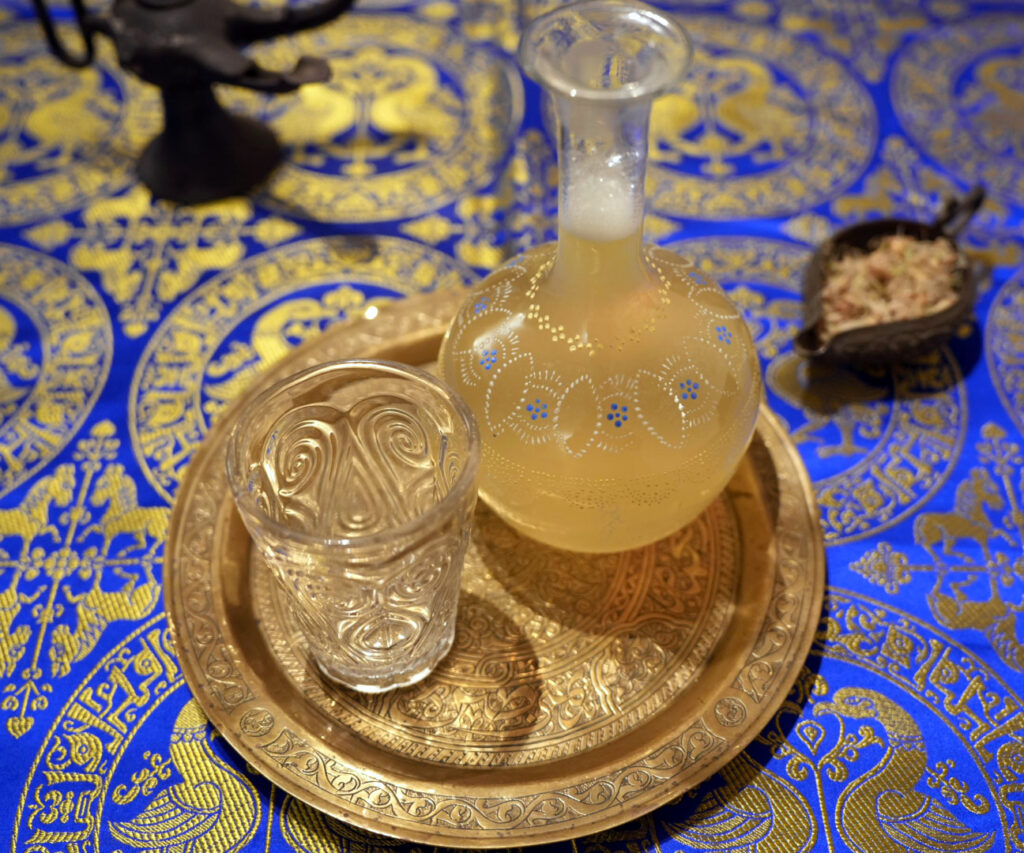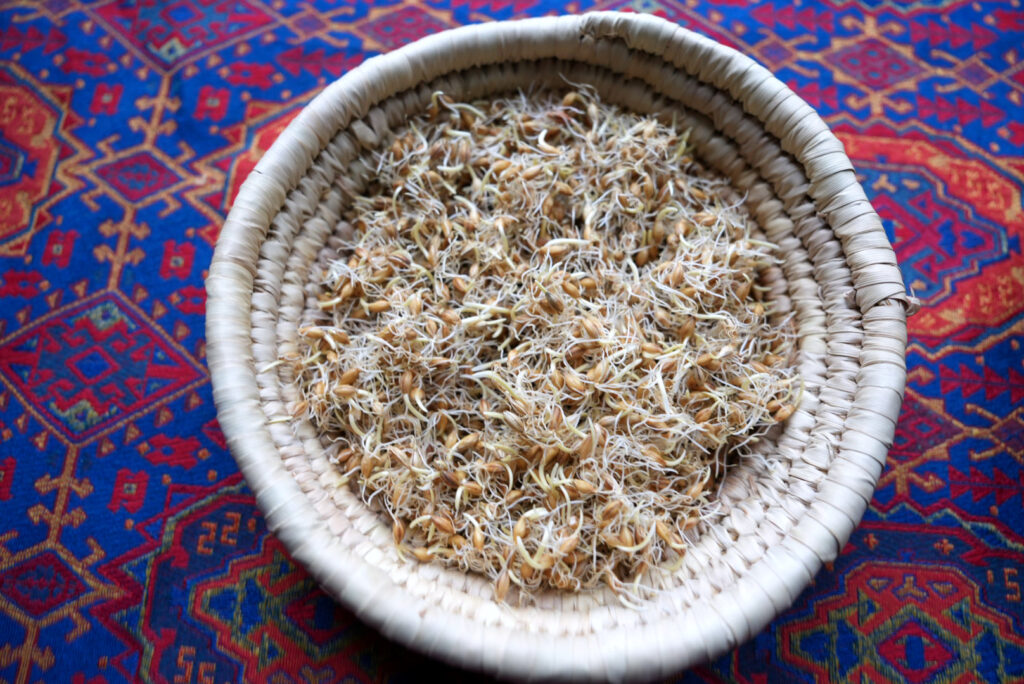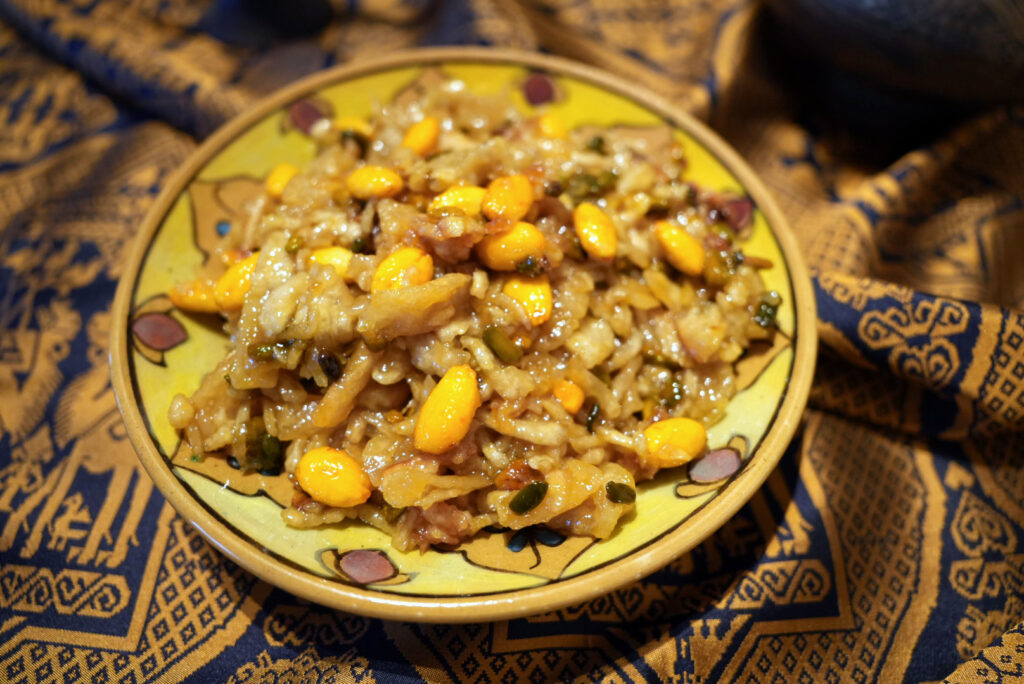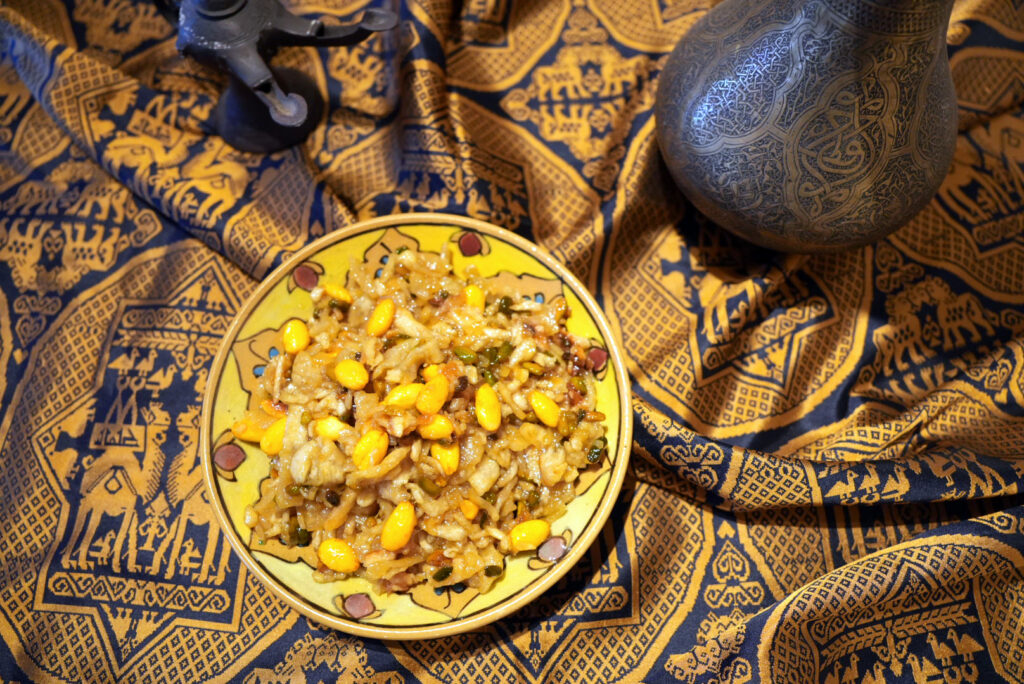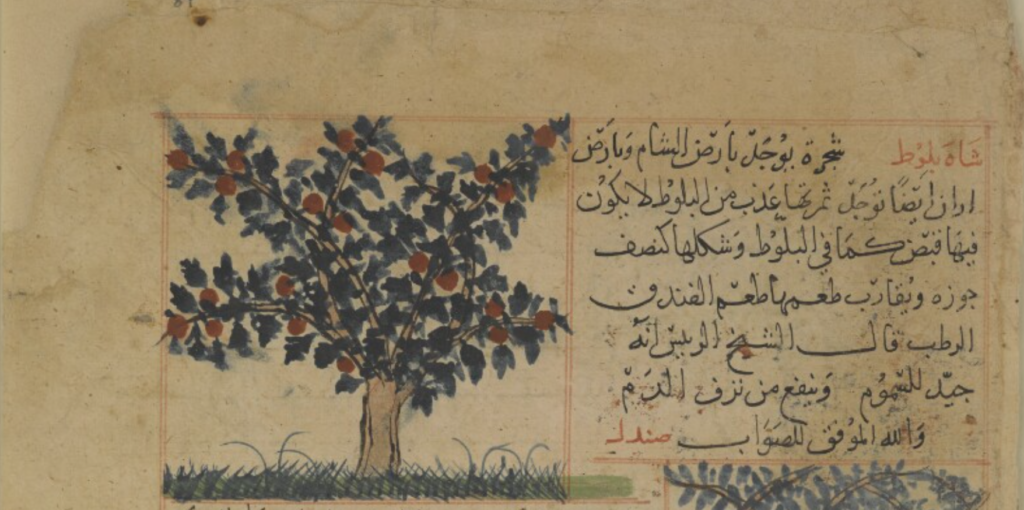This recipe from The Exile’s Cookbook has deep roots, which can be traced back to Abbasid times and possibly further, to Persia. The earliest narjisiyya (نرجسية) recipes involved adding egg yolks at the end of the cooking process thus creating the impression of narcissus flowers (نرجس, narjis) floating on top, hence the name of the dish.
In al-Andalus, the dish appeared in a different guise, namely as a lamb omelette of sorts being cut up in the shape of a narcissus flower, with the carrots serving as the stamens. The recipe calls for ram (but lamb will do just as well, of course), which is cut up and then cooked halfway through with salt, olive oil, pepper and coriander. Then carrots are cut up lengthwise and ‘planted’ on the meat, while adding some water, vinegar and saffron. Afterwards, it is time to sprinkle on washed rice and then — it is an Andalusian dish, after all! — eggs whipped with saffron. You can cook it either in the pot or in the oven (as in the recreatino). When it is done, the resultant omelette — or quiche — is cut up in the shape of narcissi. The narjisiyya was thought to have aphrodisiac properties as well as being beneficial for those engaged in strenuous exercise.
The Iranian Nargesi Esfanaj is the closest modern descendant, though it may well have predated the Arab dish.
